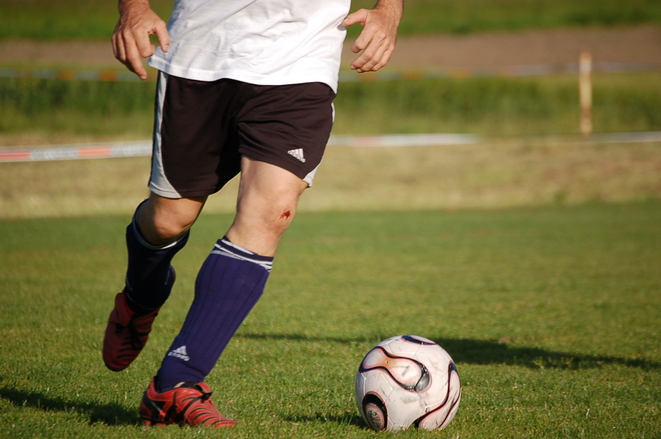
With the Euro 2016 warm-up matches kicking off this week and the Champions League final in Milan coming up, football players who have been working hard all season will be feeling the heat! Football is the world’s most popular sport with over 3.5 billion fans, 265 million registered players, 5 millions registered referees and officials and even more recreational players.
Although sporting injuries unfortunately are par for the course, as football combines a lot of sudden stopping and starting, agility and strength the risk of injury is fairly high in comparison to other sports and footballers suffer more injuries than those playing rugby, hockey, boxing or judo! Although for the most part, the injuries sustained when playing football don’t tend to be as severe, if you love to play, an injury can be maddening and a real setback. Football related injuries unsurprisingly mostly affect the lower limbs, the groin, pelvis, hip, thigh, knee calf, foot and ankle. Research indicates that the largest portion of football injuries are caused by trauma such as landing awkwardly from jumping or or colliding with an opponent and injury is most likely to happen during competitive matches over during training. Women have a higher rate of injury whilst playing football than men and over a quarter of injuries are due to overuse having developed over time, incidence of injury increases as players get older.
Learning more about frequently occurring football injuries can be a good way to prevent them:
Hamstring strain: The hamstring is made up of four muscles that run up the back of the thigh and they make it possible to bend at the knee. If the fibres in the muscles are stretched beyond their limits, this can result in a tear which is known as hamstring strain. A sudden increase in speed is often the cause and you are more likely to suffer this if your muscles are stiff, either from not warming up enough or if fatigued from previous exertion. You can prevent injury by making sure you warm up sufficiently; as body temperature increases, muscles become more pliable and can tolerate longer stretching. Hamstring injuries are extremely painful and you will experience pain in the back of the thigh or buttocks when walking or straightening the leg making movement difficult! Treatment of hamstring strain means implementing the PRICE protocol immediately (protection, rest, ice, compression and elevation) and for several days. The next step is rehabilitation which should include gentle stretching and muscle strengthening exercise. You can read more about hamstring injury here.
Sprained Ankle: Ankle sprains most often happen when the ankle rolls outwards meaning that the soles of foot faces inwards and up stretching the outside of the ankle. In football, this is often caused by landing badly, running on uneven surfaces or being tackled. When an ankle sprain happens the ligaments in the in the ankle joint suffer trauma and you can sometimes hear a pop or snap. Building up the muscles in the ankle area with strengthening exercises reduces risk of ankle sprain. Sprained ankles are incredibly sore, the area often swells and it is hard to put weight on. If you do suffer an ankle sprain, get it looked at by a professional as soon as possible, especially if you have trouble walking on it to rule out more severe damage to the bones of the ankle. Employ RICE (Rest, Ice, Compression and Elevation) as soon as possible to bring the swelling down. Physiotherapy is often needed if the swelling is slow to subside and soft tissue massage can help. In recovery, taping and bracing can help mobility and improve stability.
Anterior Cruciate ligament tear: The anterior Cruciate ligament (ACL) is the main ligament involved in stabilising the knee. The ACL can be injured several different ways when playing football but landing on a bent knee then twisting, landing on a twisted knee or landing from a jump on a knee that is overextended is often the culprit and a hard tackle from an opponent with direct contact to the knee can also cause ACL damage. Again, you might hear a pop or crack and in most cases, the knee will swell immediately leaving you unable to straighten the leg or bear weight without much discomfort. Balance and strengthening exercises are often used very effectively to prevent ACL injury. When it comes to treatment of ACL tears, often surgery is needed but it is very much dependant on the needs of individual patient. Balance and strengthening exercises can also be used in rehabilitation. Read more here.
To try and avoid injury, ensure that you do regular fitness and resistance training focussing on the back, buttocks and legs. Always warm up pre-game to reduce chances of strains and do not neglect the cool down which will reduce muscle tightness, in the long term protecting you from further injury. Always get adequate rest between high intensity periods of activity to give your body time to repair. If you do get injured, get in touch with us here straight away. At The Physiotherapy Partners, our team of highly trained physiotherapists are on hand to help and with many avenues available for treatment can get you back playing the beautiful game as soon as possible!



